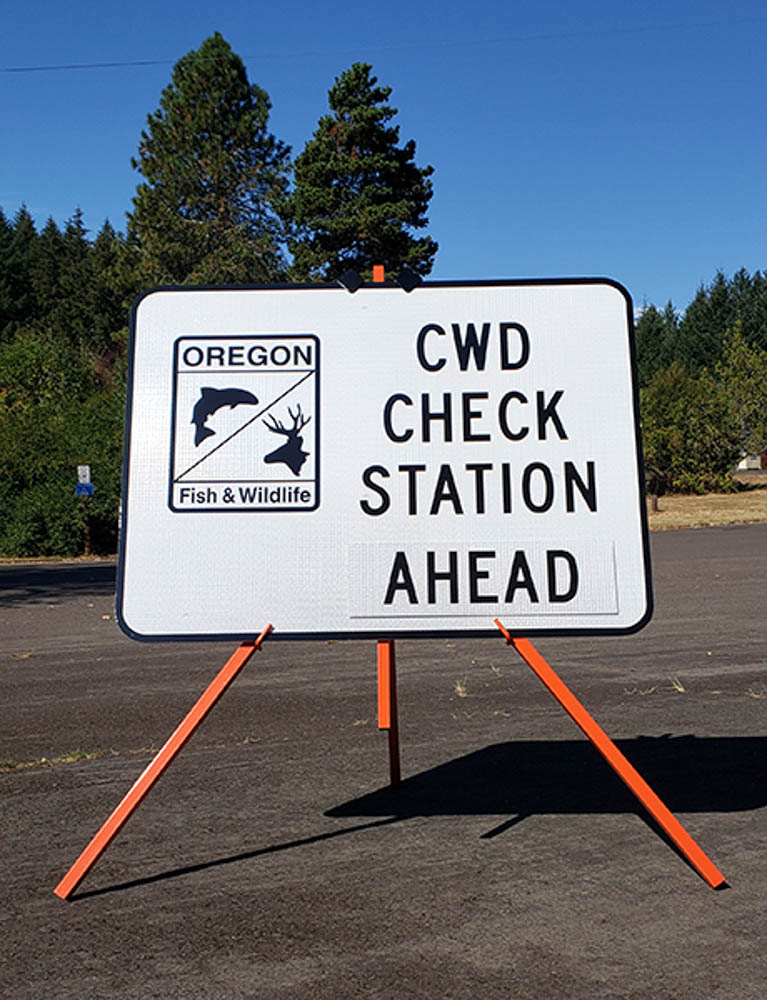Below is a news release from the Oregon Department of Fish and Wildlife.
Big game hunters who tag a deer or elk early in the season should stop by one of ODFW’s Chronic Wasting Disease (CWD) check stations the opening weekend of major rifle seasons. ODFW staff will be sampling animals for this deadly disease recently detected in Idaho near Oregon’s northeast border.
Hunters can also contact their local ODFW office to arrange for district staff to get a sample or ask their meat processor or taxidermist.Find a list of participating ODFW offices and businesses at https://myodfw.com/articles/other-ways-get-your-animal-tested-cwd
New this year, hunters transporting deer, elk or other wildlife parts who encounter a CWD check station are required to stop to have their animal sampled (per HB 3152 passed by Oregon’s legislature last year). Hunters or vehicles that are not transporting wildlife carcasses or parts do not need to stop. Hunters are also not required to go out of their way to drive by a check station, though ODFW encourages every hunter transporting a deer or elk to stop by if they are in the area.
ODFW has sampled more than 24,000 deer and elk for CWD over the past 20 year as the disease began to spread from Colorado and Wyoming to other states due to animal migrations and movements of live animals and carcasses by people. Oregon’s surveillance effort has not detected CWD in free-ranging deer, elk or moose within our borders. Unfortunately, it was found in mule deer, Rocky Mountain elk and white-tailed deer in NW Idaho, just 30 miles from the Oregon border, late last year.
“With the disease detected in multiple species so close to Oregon, we are concerned it could already be here,” said Dr. Colin Gillin, ODFW state wildlife veterinarian. “That’s why we are asking successful hunters to please get their animal tested this year.”
The more animals the state tests, the more certain ODFW can be that the disease is not in the state. If it is detected, ODFW can implement its response plan to contain the spread of the disease.
“There is no cure, no treatment, or vaccine for the disease and it is fatal to all animals that become infected,” continued Gillin. “But if we catch it early, we will have the best chance of minimizing its spread and impact on Oregon’s big game herds.”
Once an animal is infected, it can take several years for symptoms to appear, so in most cases deer and elk that test positive for the disease will appear normal and healthy. That’s why ODFW tests as many animals as it can, including both hunter-harvested and roadkilled deer and elk. Oregon’s captive elk facilities are also assisting in the state’s surveillance by testing all of their captive animals that die beyond the age of 6 months.
Go here for locations and other information.
(Photo source: Oregon Department of Fish and Wildlife)
